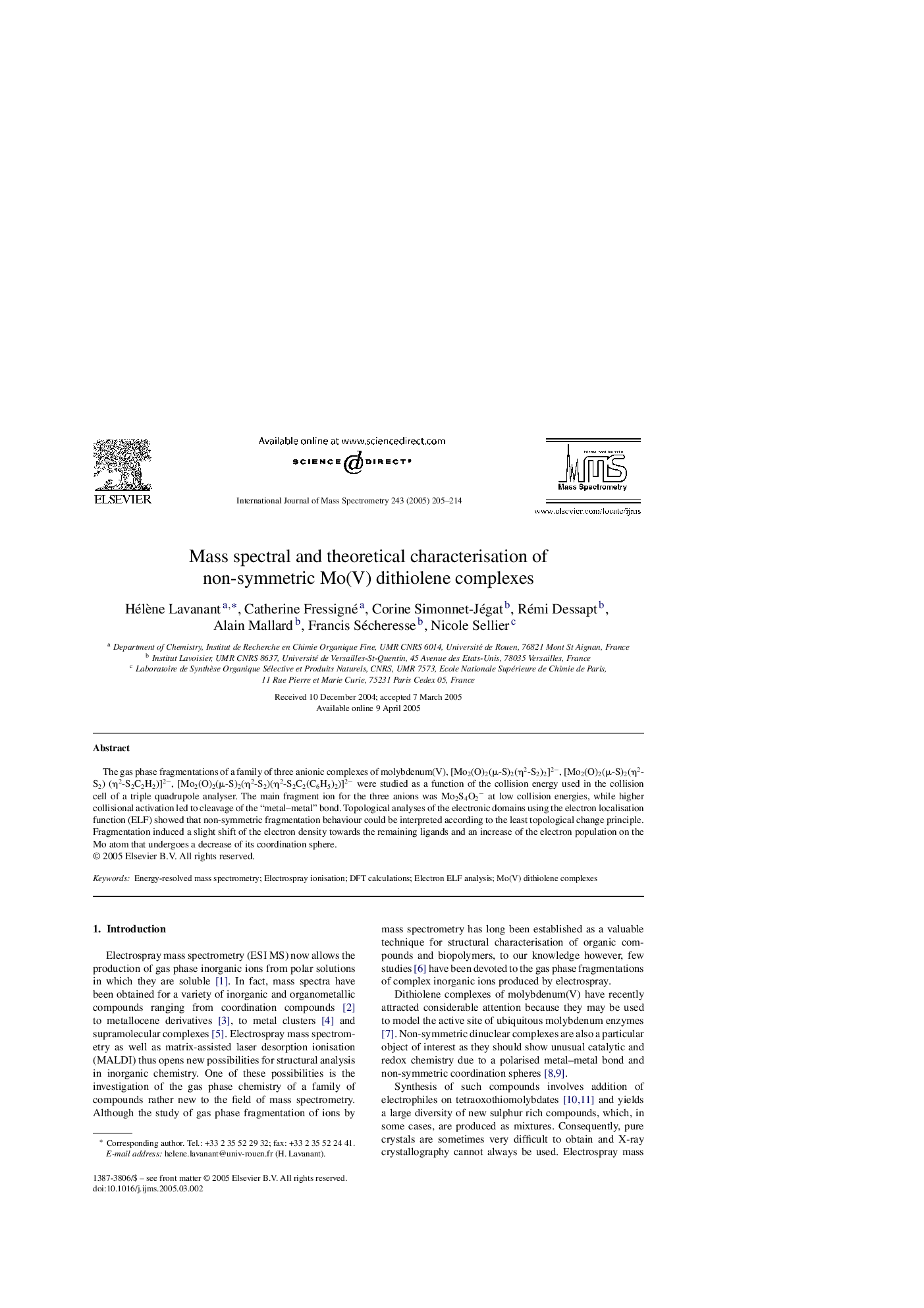| Article ID | Journal | Published Year | Pages | File Type |
|---|---|---|---|---|
| 9746667 | International Journal of Mass Spectrometry | 2005 | 10 Pages |
Abstract
The gas phase fragmentations of a family of three anionic complexes of molybdenum(V), [Mo2(O)2(μ-S)2(η2-S2)2]2â, [Mo2(O)2(μ-S)2(η2-S2) (η2-S2C2H2)]2â, [Mo2(O)2(μ-S)2(η2-S2)(η2-S2C2(C6H5)2)]2â were studied as a function of the collision energy used in the collision cell of a triple quadrupole analyser. The main fragment ion for the three anions was Mo2S4O2â at low collision energies, while higher collisional activation led to cleavage of the “metal-metal” bond. Topological analyses of the electronic domains using the electron localisation function (ELF) showed that non-symmetric fragmentation behaviour could be interpreted according to the least topological change principle. Fragmentation induced a slight shift of the electron density towards the remaining ligands and an increase of the electron population on the Mo atom that undergoes a decrease of its coordination sphere.
Related Topics
Physical Sciences and Engineering
Chemistry
Analytical Chemistry
Authors
Hélène Lavanant, Catherine Fressigné, Corine Simonnet-Jégat, Rémi Dessapt, Alain Mallard, Francis Sécheresse, Nicole Sellier,
